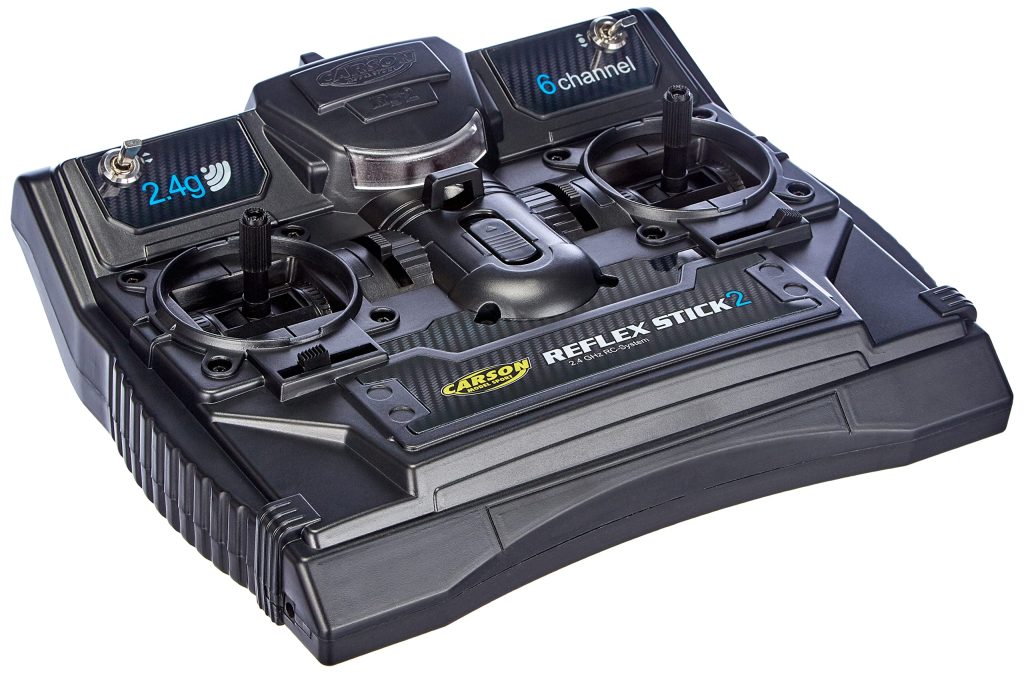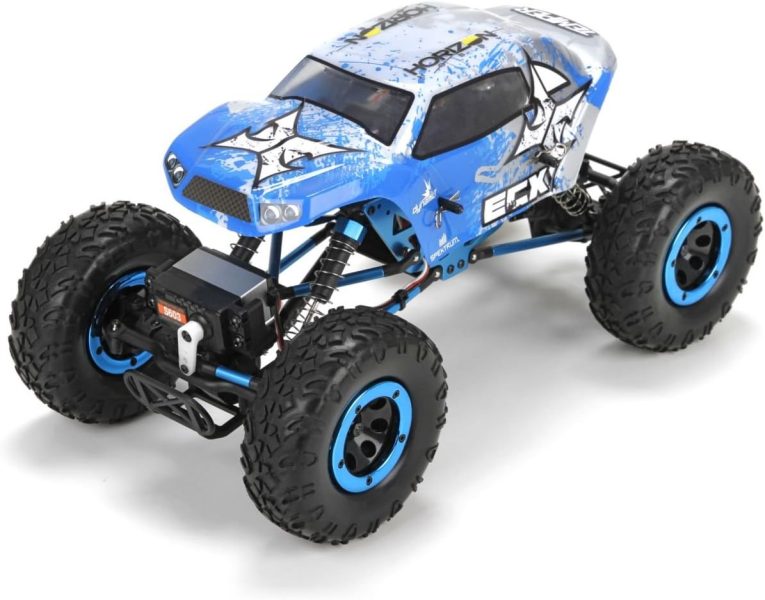Remote control (RC) cars are a classic hobby and sport that continues to advance with new technology. Most RC racers use either stick or wheel-based transmitters to control their car. But which type gives you better performance on the track? This comprehensive guide examines the pros and cons of stick vs wheel controls for RC racing.
Overview of Transmitter Types
RC cars are controlled by a handheld transmitter that sends signals to the receiver in the car. This allows you to adjust the steering, throttle, and brakes from a distance. The main types of transmitters are:
Stick Transmitters – Two joysticks that control the throttle on one stick and the steering on the other. Often include toggle switches for functions like lights. Resemble radio controls.
Wheel Transmitters – A steering wheel operates the front wheels, while a trigger controls the motor’s throttle. Mimics real car controls.
Many advanced transmitters also have programmable features, multiple control modes, and telemetry data display.
Direct Comparison
| Attribute | Stick Transmitter | Wheel Transmitter |
|---|---|---|
| Steering Control | Joystick less precise | Steering wheel more realistic |
| Throttle Control | Thumb stick intuitive | Trigger comfortable for long races |
| Ergonomics | Requires both hands | One hand on wheel, one on trigger |
| Cost | Tend to be more affordable | Wheels are higher priced |
| Features | Advanced functions may be less accessible | Can integrate telemetry displays |
| Batteries | Require frequent AA battery changes | Can use rechargeable Li-po pack |
Pros and Cons of Stick Transmitters

Pros
- Intuitive dual joystick operation
- Very common and familiar to RC drivers
- Wide range of affordable options
- Compact size easy to carry
Cons
- Less precise steering control
- Less realistic driving experience
- Can be tiring holding in both hands
- Requires frequent battery changes
Pros and Cons of Wheel Transmitters
Pros
- Steering wheel provides more accuracy
- Trigger throttle mirrors real car
- One handed operation available
- Rechargeable battery packs
- Can integrate telemetry data
Cons
- The steering wheel takes practice to master
- Larger size less portable
- Advanced programmability often costs more
- Throttle trigger can cause hand fatigue
Steering Control Comparison
One of the main differences between stick and wheel transmitters is the type of steering control.
Joystick Steering
The joystick provides proportional control – the further you push it left or right, the more the wheels turn in that direction. But it lacks precision, depth perception, and may take concentration to steer in a straight line.
Wheel Steering
The steering wheel setup mimics driving a real car. Turning the wheel directly controls the angle of the front tires. This gives you muscle memory and more accurate reactions when racing and provides a realistic feel. The wheel’s continuous motion makes it easier to make micro adjustments to steering.
For competitive racers, the precision of the wheel steering generally provides better lap times and control at high speeds.
Throttle Control Comparison
Controlling the RC car’s speed is also an important element for racing performance.
Joystick Throttle
The thumb joystick gives you proportional forward and reverse control. Like a virtual gas pedal, push further to go faster. It allows simultaneous steering and speed changes. But holding the stick takes endurance and concentration.
Trigger Throttle
The trigger throttle is pressed with your index finger, allowing your hand to relax when not accelerating. This reduces fatigue over long races. Like an actual accelerator pedal, you can modulate throttle input precisely. However, you must coordinate steering and throttle together.
For endurance races, the more ergonomic trigger throttle helps conserve your hand strength.
Ergonomics and Handling
The different transmitters suit different driving styles.
Stick Transmitters
Stick controls require holding the transmitter with both hands at all times. This allows you to make steering and throttle adjustments simultaneously. But it can be tiring to grip continuously, and joystick precision suffers.
Wheel Transmitters
Wheels free one hand when steering, letting you rest your arm. The wheel is turned using broader arm motions rather than small joystick movements. Less fatigue provides better control in long events. However, you must transition your hand between the wheel and trigger which requires coordination.
For casual driving, sticks give you better maneuverability. But wheels are often preferred for competitive racing and long practice sessions.
Cost Comparison
The price difference between stick and wheel transmitters is worth considering:
Stick Transmitters
Entry-level stick transmitters start around $50-100. This makes them very affordable for casual hobbyists and kids. Even advanced programmable sticks with multiple controls only run $300-500 for high-quality options.
Wheel Transmitters
Entry-level wheel transmitters begin around $150. More advanced racing wheels with robust force feedback, telemetry and programmability run $500 on up. High-end professional wheels cost $1000+.
If you are on a budget, stick transmitters offer more value. But expect to spend more for a wheel with comparable features.
Features and Customization
Both types of transmitters come in different levels of sophistication.
Stick Transmitters
Most stick transmitters have throttle/steering trims, dual rates, and basic controls like lights or differentials. Adjustments are made via small switches and multi-function buttons. High-end sticks have LCD screens, programmable profiles, and telemetry, but are less common.
Wheel Transmitters
Many wheel transmitters integrate multi-function LCDs and telemetry displays. Their larger size and rechargeable batteries accommodate more features. High-end racing wheels have advanced customization for control curves, multiple configuration profiles, and real-time graphs.
If you desire maximum adjustability and data, wheel transmitters tend to provide more built-in features.
Batteries and Power
RC transmitters use a variety of battery types:
Stick Transmitters
Most sticks use standard AA or AAA batteries, usually requiring 4-8 to operate. These must be changed frequently, sometimes every 10 hours of driving. It can be annoying to deal with this maintenance.
Wheel Transmitters
Wheels often have an internal Li-po battery pack that can be recharged over 500 times. This is much more convenient than changing disposable batteries every session. However, eventually the Li-po pack would need replacement after 2-3 years.
Rechargeable Li-po packs save money and hassle in the long run. But replaceable AA/AAA batteries offer more flexibility.
Recommended Transmitter Models
Stick Transmitters
Entry Level
- FlySky FS-GT2B – $55
- Spektrum DX2E – $100
- Futaba 3PV – $70
Advanced
- Traxxas TQi – $200
- Spektrum DX5 Rugged – $250
- Futaba 4PM – $480
Wheel Transmitters
Entry Level
- FlySky FS-GT2 – $90
- Yeah Racing EX-1 – $150
- ECX ECX3015 – $140
Advanced
- Futaba 3PX – $530
- Sanwa MX-V – $500
- Spektrum DX4C – $320
Pro Racing
- Futaba 7PX – $1100
- KO Propo EX-10 – $1300
- Sanwa M17 – $999
Final Thoughts on Control Choice
When choosing between stick or wheel RC car transmitters, consider factors like:
- Budget – Sticks are more affordable, wheels cost more
- Precision – Wheels allow more accurate control
- Ergonomics – Wheel less tiring for long events
- Features – Advanced functions found more on wheels
- Power – Sticks use replaceable batteries, wheels recharge
For casual use and kids, stick transmitters provide accessible RC fun. Budget racers also favor their lower cost. But to compete at the highest levels, precision wheel transmitters are the preferred control input. Their advanced features and ergonomic advantages allow expert drivers to shave lap times and conquer long endurance races.
If you’re serious about competitive RC racing, investing in a quality wheel transmitter is recommended. Test different models to find the steering sensitivity and throttle response that best suits your driving style. With practice, wheel control gives you the winning edge.
